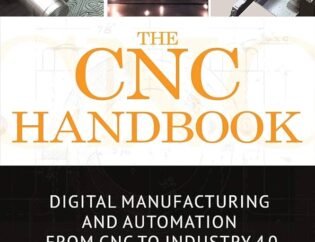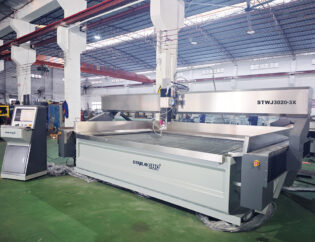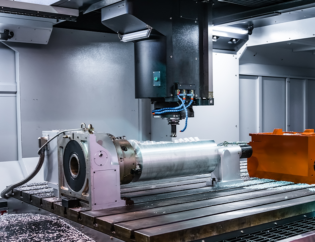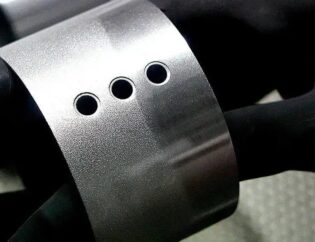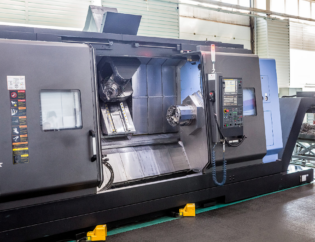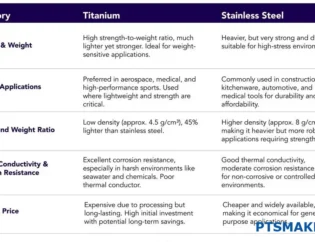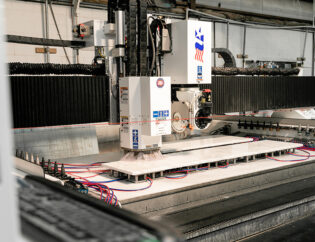Machining cutting tools are essential components in the manufacturing industry, playing a crucial role in shaping and finishing materials with precision. Understanding these tools is vital for engineers, machinists, and hobbyists alike, as they directly impact the efficiency and quality of machining processes.
In this guide, readers will explore the various types of cutting tools, their applications, and the factors influencing their performance. From tool materials to geometry, we will delve into the intricacies that define effective machining.
Additionally, the guide will cover maintenance practices and advancements in cutting tool technology, equipping readers with the knowledge to optimize their machining operations. By the end, you will have a comprehensive understanding of cutting tools and their significance in achieving superior results in machining tasks.
Different Types of Cutting Tools & Their Uses
In this article, you’ll learn
Related Video
what is a cutting tool? Its materials, classification, and types of cutting tools are all explained with pictures. Also, you can download the PDF file at the end of this article.
What is a Cutting Tool?
Cutting tools are wedge-shaped, sharp-edged tools used during machining to cut extra layers of material from a workpiece to achieve the desired shape, size, and accuracy. They must endure the heat and force produced during the machining process, and the cutting tool material must be harder than the material being cut (workpiece).
The tools need specific geometry with clearance angles so that only the cutting edge touches the workpiece’s surface. The width, number, and shape of the flutes or teeth, as well as the angles of the cutting face, are all significant factors of the cutting tools.
All of these variables, as well as the speed and feed at which the machine operates, must be optimized for a longer lifespan. Single-point cutting tools and multi-point cutting tools can both be used for cutting.
Technical Features of Cutting Tools
Here’s a comparison of the technical features of different cutting tools:
| Feature | Single Point Cutting Tool | Double Point Cutting Tool | Multi-Point Cutting Tool |
|---|---|---|---|
| Cutting Edges | 1 | 2 | 3 or more |
| Material Removal Rate | Low | Moderate | High |
| Tool Life | Short | Moderate | Long |
| Cost | Low | Moderate | High |
| Applications | Turning, shaping | Drilling | Milling, reaming |
Types of Cutting Tools
Cutting tools can be classified based on various criteria. Below is a comparison of different types of cutting tools:
| Type | Description | Advantages | Disadvantages |
|---|---|---|---|
| Single Point Cutting Tool | Has one main cutting edge, used in turning and shaping. | Simple design, low cost. | High wear rate, short tool life. |
| Double Point Cutting Tool | Contains two cutting edges, used in drilling. | Reduces vibrations, better stability. | Precision issues may arise. |
| Multi-Point Cutting Tool | Has multiple cutting edges, used in milling and reaming. | High material removal rate, longer tool life. | More complex design, higher cost. |
| Drill | Used to create circular holes. | Versatile, widely used in various applications. | Limited to hole-making operations. |
| Milling Cutter | Used for milling operations, can have various shapes. | High efficiency, suitable for complex shapes. | Requires precise setup and operation. |
| Reamer | Used to finish pre-drilled holes. | Provides high accuracy and smooth finish. | Limited to hole finishing. |
| Broach | Used for machining surfaces or holes. | High precision, suitable for complex shapes. | Requires specialized machines. |
| Hob | Used for cutting gears. | Efficient for mass production of gears. | High initial cost for specialized tools. |
| Grinding Wheel | Contains abrasive compounds for grinding. | Excellent for finishing operations. | Limited lifespan, requires frequent replacement. |
Based on the Motion of the Tool
Cutting tools can also be classified based on their motion:
- Translatory Motion: Tools that move in parallel, commonly found in lathe machines.
- Reciprocating Motion: Tools that move up and down or back and forth, used in shaper machines.
- Rotary Motion: Tools that rotate around a fixed axis, found in milling and drilling machines.
Based on Materials Used for Cutting Tools
Cutting tools can be made from various materials, each with unique properties:
- High Carbon Steel: Good for high-hardness settings but loses hardness at high temperatures.
- High-Speed Steel: Suitable for high-speed applications, retains hardness at elevated temperatures.
- Ceramic Tool: Extremely hard, can withstand high temperatures, ideal for lathe and milling machines.
- Cemented Carbide: Offers great strength and hardness, suitable for high wear resistance.
- Diamond: The hardest material, excellent for cutting resilient materials.
Conclusion
Understanding the different types of cutting tools, their materials, and their applications is crucial for optimizing machining processes. Each type of cutting tool has its advantages and disadvantages, making it essential to choose the right tool for specific tasks. Whether you are working with single-point tools for turning or multi-point tools for milling, selecting the appropriate cutting tool can significantly impact productivity and efficiency in machining operations.
FAQs
1. What is a cutting tool?
A cutting tool is a wedge-shaped and sharp-edged tool used to remove excess layers of material from a workpiece through shearing during machining, achieving the desired shape, size, and accuracy.
2. Why are cutting tools essential in machining?
Cutting tools are essential for precise material removal, allowing for accurate shaping and sizing of workpieces. They are firmly attached to machine tools and provide the necessary cutting action.
3. What materials are cutting tools typically made from?
Common materials for cutting tools include high-speed steel, tungsten carbide, ceramics, cubic boron nitride, and diamond, each offering different properties for various applications.
4. What are the main types of cutting tools?
Cutting tools can be classified into single-point, double-point, and multi-point cutting tools, each serving different machining operations.
5. How does the grain size of a cutting tool affect its performance?
Grain size influences the material removal rate; smaller grains remove more material and provide a finer finish, while larger grains remove material more aggressively but may produce a rougher finish.


